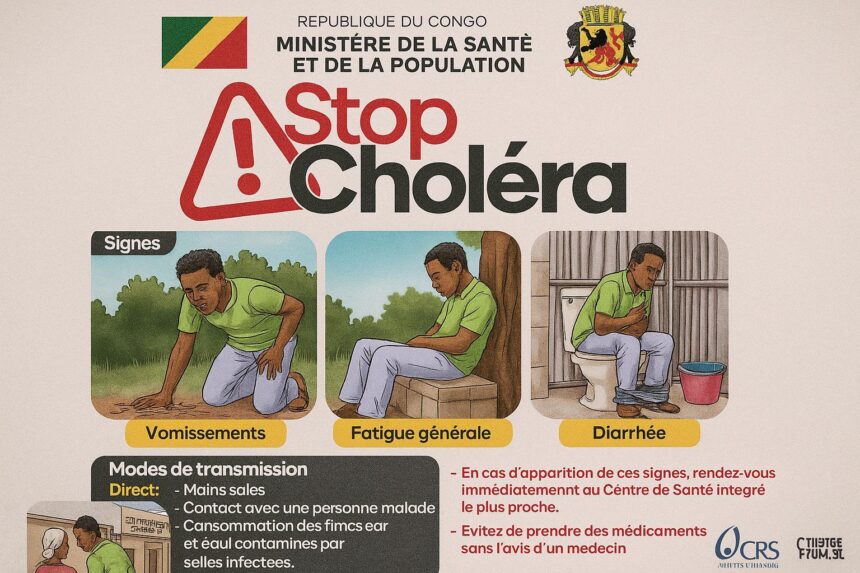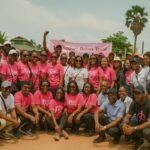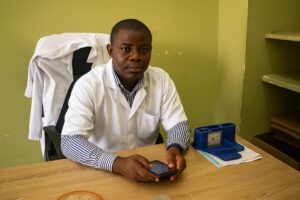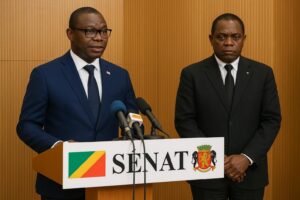Regional epidemiological landscape
The downstream bend of the Congo River once again faces a bacteriological challenge as Vibrio cholerae resurfaces on Mbamou Island, a small but strategic expanse of land wedged between Brazzaville and Kinshasa. The flare-up, detected by sentinel laboratories of the Ministry of Health on 24 July, occurs against a wider backdrop of heightened transmission stretching from Angola’s coastal Cabinda enclave to the Equateur province of the Democratic Republic of Congo (WHO situational update, May 2024). Epidemiologists underline that the current regional reproduction rate remains below the critical threshold of 1.3, yet riverine trade and porous borders make the Pool department an epidemiological hinge that can tip contagion dynamics within days.
Government response and capacity
In a televised address, Professor Jean Rosaire Ibara, speaking for the Ministry of Health and Population, declared that “mobile rapid-response teams are already on Mbamou, equipped with rehydration salts, antibiotics and point-of-use chlorination kits.” His statement aligns with the national contingency plan drafted in partnership with the World Health Organization following the 2017 episode, a plan praised for its clarity on command-and-control and for its logistical corridors tapping into the country’s well-maintained river fleet. The government has activated an Incident Management System that integrates epidemiological, water and sanitation, and communication pillars, thereby ensuring that local prefectures can requisition supplies without cumbersome bureaucratic clearance.
International cooperation and resources
Brazzaville’s diplomatic posture has been to treat public health as a regional public good rather than a zero-sum arena. As early as June, Congo-Brazzaville co-signed an Africa CDC appeal that pooled 1.2 million oral cholera vaccine doses to be dispatched along the Congo River corridor (Africa CDC communiqué, June 2024). The first 150 000 doses landed at Maya-Maya Airport under a joint UNICEF–Gavi airbridge last week, with the cold chain routed straight to river barges capable of maintaining two-to-eight-degree conditions for forty-eight hours. Neighbouring Angola and the DRC have agreed on synchronized immunisation calendars, a diplomatic achievement that reduces the risk of antigenic gaps along transboundary routes. The United Nations Office for the Coordination of Humanitarian Affairs, meanwhile, has earmarked US$3.4 million from its Central Emergency Response Fund to reinforce water-quality monitoring in Brazzaville’s peripheral communes.
Community engagement and behavioural change
Public-health doctrine acknowledges that infrastructure alone seldom defeats cholera; behavioural vectors are equally decisive. A radio campaign in Lingala and Kituba now runs five times daily on public broadcaster Radio Congo, disseminating succinct advice on hand-washing and safe water storage. The Congolese Red Cross has revived its ‘brigades communautaires’ model first pioneered during the COVID-19 response, whereby locally respected figures—teachers, river-boat captains, and parish leaders—receive micro-grants to organise hygiene demonstrations. Field observations indicate that acceptance levels are high: chlorination tablets distributed on Mbamou recorded a 79 percent utilisation rate in the first seventy-two hours, according to a rapid assessment by Médecins d’Afrique. Such figures underscore the population’s receptiveness when messages are framed through trusted intermediaries rather than top-down injunctions.
Infrastructure and long-term resilience
Congo-Brazzaville’s National Development Plan 2022-2026 earmarks CFA 62 billion for potable water infrastructure, including solar-powered boreholes in peri-urban districts. Although the timelines extend beyond the present outbreak, diplomats note that these projects serve as structural firebreaks for future epidemics. A feasibility study, co-funded by the African Development Bank, proposes extending the existing Brazzaville water-treatment plant’s capacity by thirty percent, potentially reducing raw-water dependency on river intake points vulnerable to contamination during the rainy season. Such capital-intensive initiatives complement the immediate distribution of jerrycans and chlorine but aim to sever the cyclical pattern in which cholera resurfaces after each hydrological crest.
Outlook for containment and resilience
Modelling from the Institut Pasteur de Bangui suggests that, given the current doubling time of 8.3 days, robust case identification and early rehydration could limit cumulative incidence to under 430 cases this quarter. Achieving that optimistic projection hinges on sustained funding for surveillance and on the continued political will already signalled by the executive branch through swift budget reallocations. International observers point out that Brazzaville’s prior success in curbing Ebola alerts in 2021 has conferred both institutional muscle memory and public trust, assets that can accelerate the present campaign against cholera.
The re-emergence of the disease is thus more accurately viewed as an operational test than an existential crisis. By coupling domestic capacity with coordinated regional diplomacy, Congo-Brazzaville positions itself to convert this moment of sanitary turbulence into a case study in calibrated crisis management—an approach that may resonate well beyond the riparian communities currently holding the epidemiological front line.


















